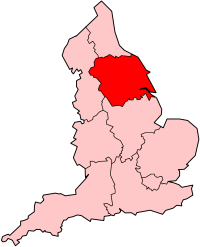Rosedale Railway
| Rosedale Valley Railway | ||||||||||||||||||||||||||||||||||||||||||||||||||||||||||||||||
|---|---|---|---|---|---|---|---|---|---|---|---|---|---|---|---|---|---|---|---|---|---|---|---|---|---|---|---|---|---|---|---|---|---|---|---|---|---|---|---|---|---|---|---|---|---|---|---|---|---|---|---|---|---|---|---|---|---|---|---|---|---|---|---|---|
| ||||||||||||||||||||||||||||||||||||||||||||||||||||||||||||||||

The Rosedale Railway was an 11 miles (18 km) goods-only railway line running from Battersby Junction across the heights of the North York Moors in North Yorkshire, England to reach iron ore deposits in the remote hills of Rosedale valley. It opened in 1861, and closed in 1929.
Overview
The first construction of a recognisable railway along this route was in 1858 when The Ingleby Ironstone & Freestone Mining Company constructed a narrow gauge line to link existing mining operations with the North Yorkshire and Cleveland Railway at Battersby (then known as Ingleby Junction). Because of the difference in height between the junction at Battersby railway station and the moorland location of the workings, a steep 1 in 5 (20%) incline[1] was located at Ingleby, where trucks would be hauled up the slope to a height of 1,200 feet (370 m) above sea level using the weight of descending full wagons. The length of the incline was 1650 yards (1510 metres) and the wagons descended at an average speed of 20 mph (32 km/h) which resulted in a journey time of 3 minutes from top to bottom.[1]
When the NY&CR had been absorbed into the NER, the NER decided to convert the line to standard gauge operations and extend the track 10 miles from the top of the incline to mine workings at Rosedale run by the Rosedale Ironstone Mining Co, whom the NER had interests in. This line opened to the west side of Rosedale on 27 March 1861. Within a few years mining also began on the east side of the valley, and an additional branch line was run from Blakey Junction around the head of the valley to reach the new workings. The workings reached a peak production of over 560,000 long tons (569,000 t) in 1873.
The route across the moors was very inhospitable during winter months. During a severe winter of 1916/17 the line was blocked for five weeks.
Closure and legacy
Because of increased costs and a falling price in the value of iron, the mines closed in 1925, but operations continued for a few years extracting the valuable calcine dust from the slag heaps. Goods traffic on the line finally ceased in 1929.
The original kilns at Rosedale West are still visible, whilst the nearby engine shed was dismantled with the stone being used for the construction of the village hall at Hutton-le-Hole, further down the valley.[2] The incline and the trackbed from the incline to Blakey Junction is now a public bridleway, part of which is followed by the Coast to Coast Walk and the Esk Valley Walk.
See also
References
- 1 2 Weaver Tomlinson, William (1914). The North Eastern Railway; its rise and Development. Green. p. 565. Retrieved 4 November 2015.
- ↑ Blakemore, Michael (2005). Railways of the North York Moors. Great Northern Books. ISBN 1-905080-04-2.
Further reading
- Hayes, R. H.; Rutter, J. G. (1984) [1974]. Rosedale Mines and Railway. Scarborough Museum: Scarborough Archaeological and Historical Society. Research Report No. 9.
External links
| Wikimedia Commons has media related to Rosedale Railway. |
- "Rosedale Railway", www.rosedalerailway.org, Kirby, Great Broughton and Ingleby Greenhow Local History Group / Rosedale History Society, archived from the original on 4 September 2011
- "Rosedale Mines & Tramway", www.subbrit.org.uk, Subterranea Britannica
- "Abandoned Communities ..... Rosedale", www.abandonedcommuinities.co.uk
- Images
- "Railways through Ingleby - The North Yorkshire and Cleveland Railway Galleries". web.onyxnet.co.uk.
